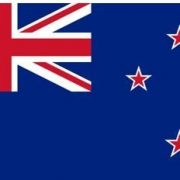Cashing in on the ?Saudi Arabia of Milk?
On of the scariest parts of driving around New Zealand a few weeks ago were these huge trucks and trailers that came barreling at you on tiny narrow roads. There couldn?t have been more than a few inches of clearance between us.
This, I had to deal with while driving a rental stick shift on the left side of the road in a pouring rain storm. Yes, they still make sticks in some parts of the world.
Then I noticed that all of the farmers were driving brand new luxury SUV?s, even after paying import prices for the vehicles that were 50% higher than at home. My radar kicked on; there?s got to be a trade here.
My suspicions were confirmed when I stopped at a remote farm to buy a kilo of blueberries and chatted up the owner. The beefy, deeply tanned gentleman with the broad brimmed leather hat and baggy shorts told me that business was booming.
Milk exports to China were exploding, land prices were soaring, and everything was good. The only problem was that the economy was growing faster than the ability of the road network to keep up, hence my problem with the lorries.
HSBC expects that New Zealand?s GDP will leap from 2.8% last year to 3.4% or higher in 2014. Exports to China, far and away the country?s largest trading partner, rocketed by 45% in 2013. Chinese capital is pouring into the Land of the Kiwis at an unprecedented rate, soaking up all the real estate they can get their hands on.
The financial markets have noticed. The iShares MSCI New Zealand Investable Market Index Fund ETF (ENZL) has been one of the world?s best performing stock markets this year, and more gains are expected. The New Zealand dollar has also been strong, and is set to reach parity with the Australian dollar for the first time in 40 years.
Ironically, poor Chinese regulation has been at the root of the economic boom. Any Chinese mother who can afford it only buys foreign infant formula. Domestic supplies are frequently found to be tainted with toxic chemicals or heavy metals. This puts New Zealand right in the sweet spot to benefit from a rising middle class in the Middle Kingdom.
You would think that Fonterra, which accounts for 90% of the country?s milk products exports, would be going through the roof now (click the following ?for their site: ?https://www.fonterra.com/global/en). It isn?t.
It had a scare last summer over bacterial contamination which has been pounding the stock ever since. That?s why New Zealand is a better index than single name play best captured through the ETF (ENZL). Fonterra shares do not trade directly on the New Zealand stock exchange, only in unit trust form.
That hasn?t prevented the industry from growing at a breakneck speed. The dairy heard has doubled to 6.5 million cows since 1980, and now outnumber people in the country by 2 million. Some 741,000 acres have been converted from other agriculture to dairy during this time, creating environmental problems. This has prompted some wags to dub New Zealand the ?Saudi Arabia of Milk.?
The boom in milk products isn?t unique to the Southern hemisphere. Chinese demand has also boosted dairy prices in the US and Europe, especially in heavily subsidized France.
All this means that the (ENZL) could have much more to run. Rising trade and current account surpluses are almost always a good formula for stock market riches. And if you get a chance to visit your investment, take it. The women down there are gorgeous.
 Fonterra Shares
Fonterra Shares
 The Blueberries Were Good Too
The Blueberries Were Good Too







